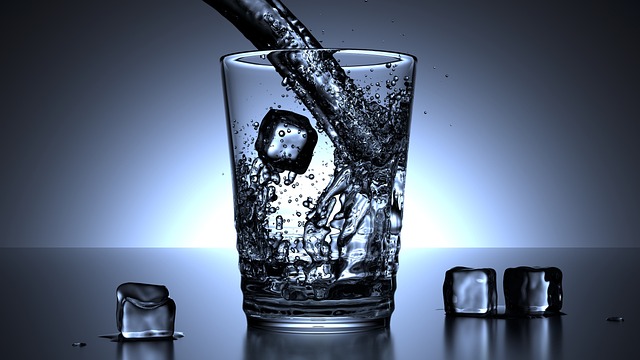Cold therapy, including ice baths and cold showers, is a natural weight management strategy that triggers non-shivering thermogenesis (NST), activating brown adipose tissue (BAT) to burn calories. This process boosts metabolism, enhances insulin sensitivity, and promotes cellular autophagy, leading to improved health and potential weight loss over time. Research indicates cold exposure for weight management effectively reduces BMI and waist circumference while offering a safe, unconventional approach to fitness goals when combined with exercise and proper hydration. Always consult healthcare professionals before starting any new strategy.
“Uncover the surprising science behind cold therapy and its powerful impact on weight reduction. This comprehensive guide explores how strategic cold exposure goes beyond a trend, delving into physiological mechanisms that aid in fat loss. From understanding the basic principles to examining scientific evidence, we navigate the effective implementation of cold techniques for a healthier, slimmer you. Discover how this ancient practice can be your modern tool for successful weight management.”
Understanding Cold Therapy: Unveiling the Basic Principles
Cold therapy, a practice that involves prolonged exposure to cold temperatures, has gained traction as an unconventional approach to weight management. At its core, this method leverages the body’s natural response to extreme cold to initiate several physiological changes. When you subject your body to cold exposure, whether through ice baths, cold showers, or other methods, it triggers a series of adaptive responses designed to preserve warmth and energy.
One key principle is non-shivering thermogenesis (NST), where the body generates heat without shivering as a way to maintain core temperature. This process involves the activation of brown adipose tissue (BAT), specialized fat cells that burn calories to produce heat. The cold stimulates BAT activity, leading to increased energy expenditure and potential weight loss over time. Additionally, cold therapy can boost metabolism, improve insulin sensitivity, and promote a state of autophagy, where cells recycle damaged components, contributing to overall health and weight management.
The Role of Cold Exposure in Weight Reduction Mechanisms
Scientific Evidence Supporting Cold Therapy for Fat Loss
The science behind cold therapy as a tool for weight reduction is growing, with numerous studies indicating its potential benefits. Cold exposure for weight management has gained attention due to its ability to stimulate various physiological responses in the body. When exposed to cold temperatures, whether through cold showers, ice baths, or whole-body cryotherapy, the body initiates a process known as non-shivering thermogenesis. This is where the body generates heat without physical activity, burning calories and potentially leading to fat loss. Research has shown that short periods of extreme cold can increase metabolic rate and promote lipolysis, the breakdown of fat cells for energy.
Additionally, cold therapy may enhance hormone levels associated with weight management. It has been observed to increase norepinephrine, a hormone that mobilizes fatty acids from adipose tissue, making them available for energy production. This process, coupled with increased adrenaline levels during cold exposure, can lead to enhanced fat oxidation and reduced body fat. Several studies have demonstrated the positive impact of cold therapy on reducing body mass index (BMI) and waist circumference, suggesting its effectiveness as a complementary approach to traditional weight-loss methods.
Safe and Effective Implementation of Cold Techniques for Weight Management
Cold therapy, or cold exposure for weight management, has gained popularity as a natural and potentially effective strategy to support weight loss goals. When incorporated into a well-rounded fitness routine, cold water immersions, ice baths, or even cold showers can stimulate various physiological responses in the body that aid in fat burning and metabolism regulation. Research suggests that short periods of cold exposure may increase energy expenditure, promote lipolysis (the breakdown of fats), and enhance insulin sensitivity.
Implementing these techniques safely is paramount. It’s advisable to start gradually, especially for beginners, as sudden extreme cold can be a shock to the system. Starting with mild cold water showers or contrasting hot-cold cycles is a gentle way to introduce your body to the benefits of cold exposure. Monitoring your body’s response and ensuring proper hydration before and after each session are crucial steps. Additionally, consulting with a healthcare professional before beginning any new weight management strategy, especially if you have underlying health conditions, is essential for personalizing and maintaining a safe and effective approach to cold therapy for weight reduction.
Cold therapy, through strategic cold exposure, emerges as a promising strategy for weight management. By understanding the fundamental principles and the science behind it, we can harness its potential to enhance fat loss efforts. The mechanisms revealed by scientific evidence point to reduced calorie intake, increased metabolic rate, and improved insulin sensitivity. Safe implementation involves considering duration, frequency, and individual tolerance, ensuring a balanced approach to incorporate cold exposure into weight management routines. Embracing this natural method could be the key to navigating a healthier, colder path towards a slimmer you.
